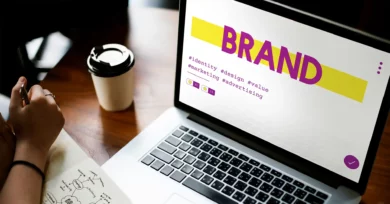In the dynamic panorama of the modern business world, staying aware of tendencies is important for maintaining an aggressive area. Whether you’re a marketer, researcher, or entrepreneur, having the proper trend-monitoring disposal could make all of the difference. This article dives into eleven essential fashion monitoring equipment that empower you to perform insightful fashion evaluation and trend tracking, making sure you in no way pass over our merging opportunities.
The Trend Tracking Tools
Let us look at some trend analysis tools as given below:
1. Google Trends: Master the Power of Search
Google Trends is a juggernaut when it comes to tracking online trends. It’s more than just a search engine – it is a treasure trove of real-time statistics that reflects what the sector is trying to find. By entering particular key phrases, you can gauge the popularity of subjects through the years and across special regions. This tool’s versatility makes it an ideal asset for expertise in the use of online audiences and looking ahead to trends earlier than they hit the mainstream.
Pros:
- Real-time information insights.
- Comprehensive geographic and temporal information.
- Easy keyword assessment.
- Visual illustration of trends.
- Valuable for content material advent and search engine optimization strategies, and a search engine has a trend-tracking feature
Cons:
- Limited to look at statistics.
- Relative popularity, no longer an absolute number, may not capture traits with low seek extent.
2. SEMrush: Uncover Competitors’ Strategies
SEMrush is going past basic keyword studies; it’s a comprehensive suite of gear designed to decorate your virtual advertising efforts. One of its standout functions is its fashion tracking capabilities. By analyzing competitor facts and enterprise tendencies, SEMrush facilitates you to highlight our techniques for higher visibility and engagement. Whether you’re trying to optimize your website, improve advert campaigns, or enhance your social media presence, SEMrush gives valuable insights for staying ahead.
Pros:
- Comprehensive virtual advertising toolkit.
- In-depth competitor analysis.
- Keyword research and monitoring.
- Backlink evaluation.
- Social media tracking.
Cons:
- Pricing might be prohibitive for smaller businesses.
- Learning curve for novices.
- Some functions may have a steeper getting-to-know curve.
3. Buzzsumo: Harness the Power of Social Sharing
In the age of social media dominance, Buzzsumo emerges as an essential trend evaluation device. It tracks content performance throughout numerous platforms and identifies which topics are producing the most engagement. By exploring trending content material, you may benefit from deeper know-how of audience possibilities and tailor your content material strategy for this reason. This device is a goldmine for content creators looking to maximize their impact in the ever-evolving digital landscape.
Pros:
- Content overall performance insights.
- Identifies famous content material.
- Discover influencers in your area of interest.
- Helps form content methods.
- Insight into target audience preferences.
Cons:
- Some functions require a subscription.
- Limited to content on particular platforms.
- May no longer capture developments out of doors on social media.
4. TrendWatching: Elevate Your Trend Sensing
Dedicated solely to trend monitoring, TrendWatching presents actionable insights into emerging customer trends. This platform scouts the globe for innovative ideas and consumer behaviors, imparting fashion reviews that could spark your subsequent groundbreaking innovation. By tapping into TrendWatching’s curated fashion database, you may align your enterprise with future demands and foster innovation that resonates with your target market.
Pros:
- Focused on client developments.
- Global trend insights.
- Sparks innovative ideas.
- Provides actionable trend reviews.
- Suitable for agencies of diverse sizes.
Cons:
- Subscription-primarily based version.
- Limited to fashion reports, no longer actual-time data.
- May now not cover extremely niche developments.
5. Brandwatch: Listen to Your Audience
Understanding what your target market is pronouncing is pivotal for powerful fashion evaluation. Brandwatch allows this via monitoring online conversations, social media, and news articles. By monitoring emblem mentions and sentiment, you may gauge how your emblem is perceived and perceive developments that are gaining traction. This device enables you to make knowledgeable choices based on real-time patron insights, and steerage your techniques within the proper course.
Pros:
- Monitors logo mentions.
- Tracks sentiment across structures.
- Crisis detection and control.
- Customizable dashboards.
- Real-time insights for decision-making.
Cons:
- Subscription-based pricing.
- Limited free trial.
- Complex interface for newcomers.
6. Mention: Real-time Monitoring, Real-time Trends
Mention stands proud of its real-time tracking abilities. It tracks brand mentions, social media engagement, and enterprise trends as they unfold. By retaining an eye fixed on the chatter surrounding your emblem and industry, you can swiftly respond to rising developments and interact with your target audience proactively. Mention’s intuitive interface and prompt alerts make it an asset for agencies aiming to stay relevant in a fast-paced digital landscape.
Pros:
- Real-time monitoring.
- Tracks logo and competitor mentions.
- Multiple platform monitoring.
- Customizable alerts.
- User-friendly interface.
Cons:
- Limited functions in the loose model.
- Pricing may be steep for advanced plans.
- May now not capture trends past online mentions.
7. Google Analytics: Data-driven Trend Insights
While typically recognized for internet site analytics, Google Analytics can also be a powerful fashion tracking tool. By analyzing personal behavior, site visitors’s assets, and engagement metrics, you may discover traits related to your online presence. This tool enables you to confirm your strategies based totally on records-driven insights, making sure you are continually aligned with your audience’s preferences and conduct.
Pros:
- Comprehensive website analytics.
- Tracks person conduct.
- Measures website engagement.
- Provides records-pushed insights.
- Offers conversion monitoring.
Cons:
- Requires setup and configuration.
- Might be overwhelming for beginners.
- Limited to online traits associated with your website.
8. Globalization Redefined: Localized Sustainability
As consumers turn out to be more environmentally aware, the fashion of localized sustainability is emerging. Businesses that specialize in reducing their carbon footprint and embracing sustainable practices that resonate with nearby communities. From sourcing materials domestically to lowering packaging waste, this fashion combines global sustainability with local relevance.
Pros:
- Environmental Impact: Reduced carbon footprint and waste make contributions to environmental renovation.
- Community Engagement: Businesses build more potent ties with neighborhood communities, improving brand loyalty.
- Resilience: Local sourcing can lessen supply chain disruptions and dependence on global markets.
Cons:
- Higher Costs: Implementing sustainable practices and neighborhood sourcing may additionally result in extended manufacturing fees.
- Logistical Challenges: Sourcing locally is probably hard for positive industries or areas.
- Consumer Education: Educating purchasers about the price of localized sustainability might require additional attempts.
9. Remote Work Revolution: Hybrid Workspaces
The pandemic multiplied the shift to faraway work, and now the fashion is in the direction of hybrid workspaces. Businesses are embracing a flexible model that combines in-workplace and faraway work options. This trend is reshaping office areas, communication tools, and painting tradition, permitting employees to strike a balance between productivity and versatility.
Pros:
- Flexibility: Employees enjoy work-life balance, which can boost morale and productivity.
- Cost savings: Reduced office space and administrative costs.
- Talent pool expansion: Companies can hire talent globally, not just by geographic barriers.
Cons:
- Communication Difficulties: Mixed layouts can create communique gaps and decrease group concord.
- Security issues: Remote work affords cybersecurity dangers and statistics safety demanding situations.
- Uneven development: Not all roles or people can work effectively in far-off or hybrid environments.
10. E-Commerce Evolution: Social Commerce
E-exchange is evolving past conventional online shops. Social change, the trend of promoting products immediately via social media structures, is gaining traction. Businesses are leveraging social networks to show off products, provide seamless buying reviews, and faucet into the power of influencers to strain sales.
Pros:
- Direct Engagement: Businesses can connect with customers right now on social media systems.
- Influencer Marketing: Leverage influencers to promote products and pressure profits.
- Streamlined Shopping: Seamless shopping opinions inner social platforms boom convenience.
Cons:
- Privacy Concerns: Collecting purchaser records on social systems increases privacy and information safety problems.
- Platform Dependency: Businesses are reliant on the recommendations and algorithms of social media platforms.
- Market Saturation: Increased adoption may also moreover cause oversaturation and extended opposition.
11. Health-Tech Convergence: Personalized Wellness
The intersection of technology and healthcare is leading to personalized well-being answers. With wearable devices, health apps, and statistics analytics, individuals can screen their fitness metrics in real time. This trend empowers customers to take proactive steps toward their proper well-being, and businesses are innovating to cater to this developing call for personalized fitness-tech solutions.
Pros:
- Health Empowerment: Individuals have more control over their fitness and well-being.
- Preventive Care: Early detection and tracking of fitness metrics can save you ability fitness troubles.
- Data-Driven Insights: Health statistics can offer treasured insights for medical specialists and researchers.
Cons:
- Data Privacy: Collecting and storing health facts increases privacy and security issues.
- Accuracy Issues: Wearable devices and apps may not constantly provide correct health readings.
- Digital Divide: Access to health-tech solutions is probably restricted for certain demographics without virtual get admission.
Conclusion
In a world in which tendencies form industries and markets, having a clear view of what is rising is non-negotiable. The seven fashion tracking equipment mentioned – Google Trends, SEMrush, Buzzsumo, TrendWatching, Brandwatch, Mention, and Google Analytics – offer diverse methods for trend evaluation. Whether you are in search of refining your advertising strategies, innovating new merchandise, or interacting with your target market more efficiently, this equipment offers important insights for knowledgeable choice-making.
FAQs
1. What are fashion tracking tools?
Answer: Trend tracking gear is software solutions that help organizations screen and analyze rising tendencies of their industry or market.
2. Why do organizations need fashion tracking tools?
Answer: Trend tracking equipment provides insights into consumer behaviors, enterprise shifts, and rising possibilities, allowing groups to live competitively and adapt their strategies for that reason.
3. How do trend-tracking tools work?
Answer: Trend monitoring equipment gathers statistics from numerous assets, consisting of social media, search engines like Google, and online conversations, and examines this information to identify patterns and tendencies.
Read the latest Marketing blogs right here.






